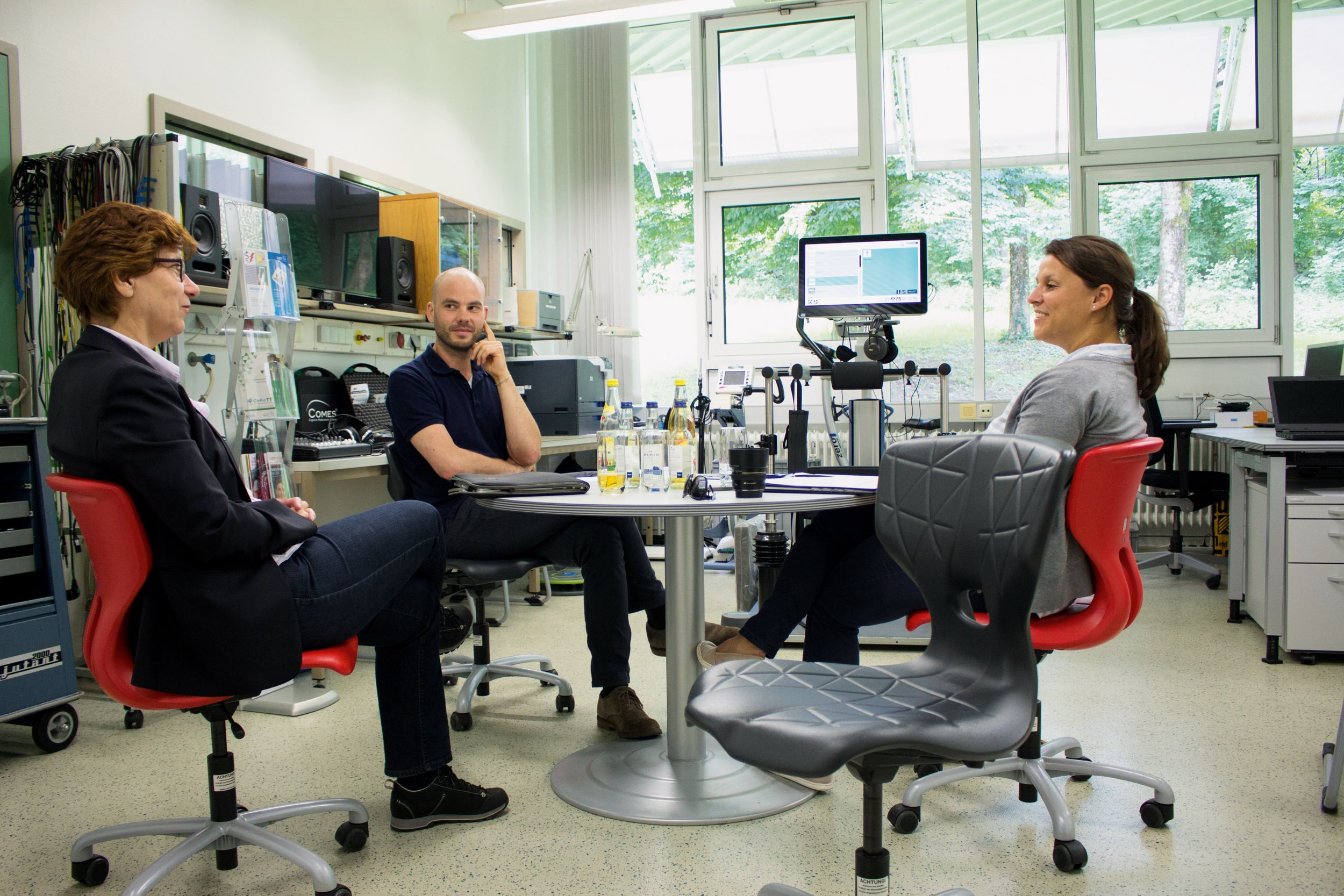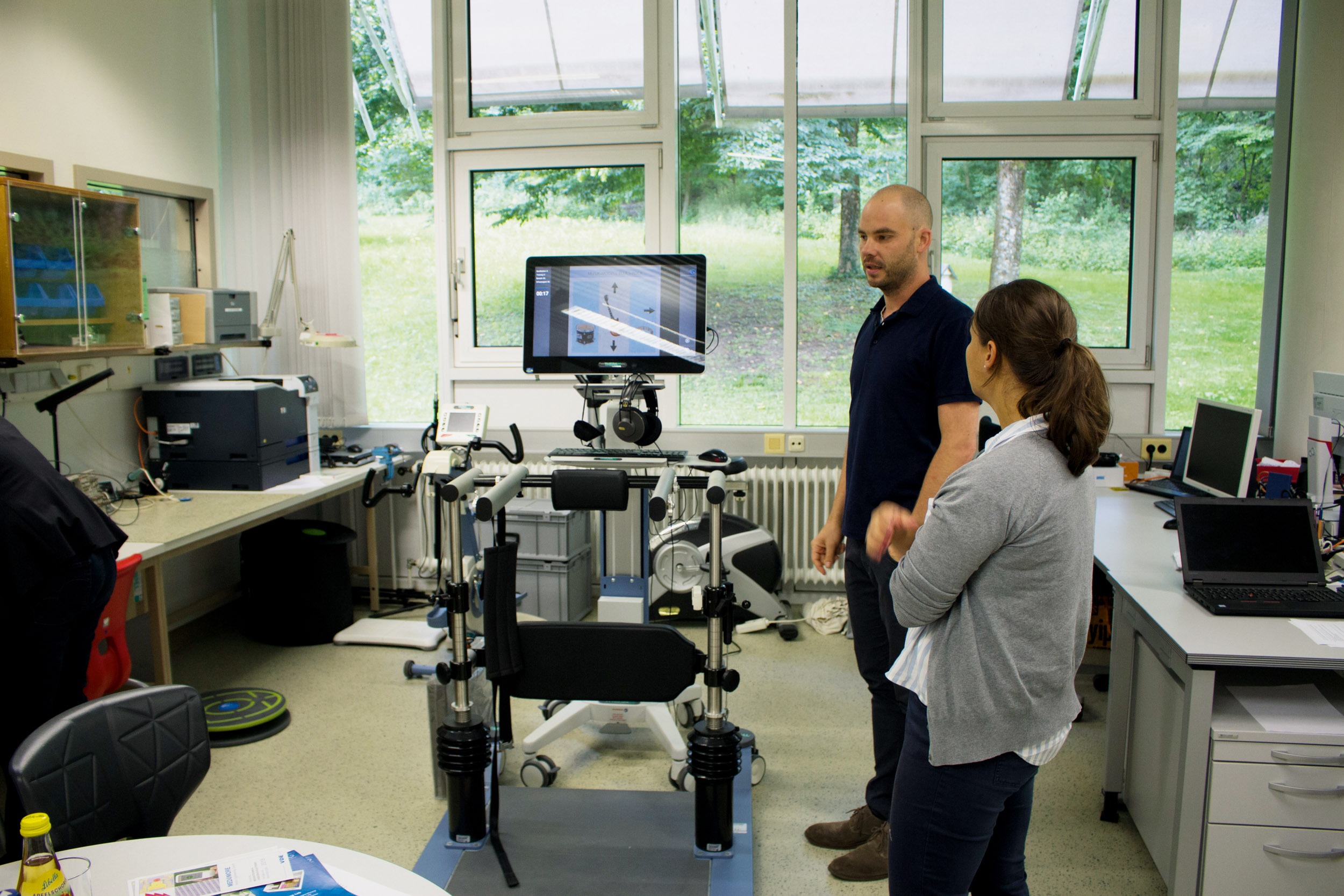
Discover how the BalThaSAR project uses sound-based feedback to improve balance training for neurological patients. Learn why auditory cues may offer stronger, longer-lasting rehab outcomes than visual feedback.

Friedrich: The abbreviation stands for balance therapy with automated sonification and drive technology for rehabilitation. BalThaSAR is designed to support neurologically-impaired individuals in restoring reactive balance and somatosensory function. Training options for the sense of balance in a fall-safe environment already exist. The basic idea of this project, however, was firstly to build a prototype with motors, to optimise the balance training, and secondly, not only to train the sense of balance with the help of visual feedback, but to guide the patient acoustically. The patient is thus in a training environment which is as free as possible, in which the therapist also has the opportunity to introduce forms of interference. So if the patient has reached a certain level of training, for example, he or she is given a little push from behind or from the side and has to react to it.
Friedrich: Our part related to sonification: developing a sonification system including acoustic guidance and suitable training games. The system integration of all modules and components, together with the control unit, was then taken on by medica.
Fuchs: With a balance disorder, many patients develop a visual dependency – they are looking for fixed points by which they can orient themselves. But especially in large crowds, with fast movements or in the dark, these fixed points are not there. That’s why it is helpful to reduce visual dependence.
Friedrich:
The literature and our preliminary work suggest that acoustic stimuli are more effective than visual ones, especially for balance training. That was the hypothesis we had set. The idea was to gradually remove visual acuity from the patient, so that he or she is only guided acoustically and still trains those activities relevant to daily life. The body movements are then sonified, i.e. sound is added, meaning that the patient is acoustically made aware of his or her current position and the target position. If visual acuity is deliberately removed, then the organ of balance and the body’s own perception, in turn, are forced to assume more tasks for spatial orientation.
Fuchs: In test series with healthy subjects, we have seen that with purely visual feedback the route navigation is quickly recognised and learned. But after that, hardly anything changes in the learning effect. You learn fast, but then it does not necessarily get better. There is also something known as the guidance effect: strong feedback, such as visual feedback, even dominates the body’s own perception, i.e. proprioception, for example. If this feedback is missing, patients often cannot do much more than before the training. The auditory element is not so dominant, and is processed largely in parallel with the intrinsic feedback. At first, the patients are much slower, because it is more exhausting and more difficult to learn. You have to involve all of the body’s own perception. But there is much to suggest that, compared to training using visual acuity, the learning curve increases more steeply and the learning effect lasts longer – meaning that the training is more effective. This now remains to be confirmed in larger studies.
Friedrich: BalThaSAR was a very appealing and fruitful project. The advantage was that we had a really new topic, and were able to develop a prototype. What is missing from BalThaSAR, before it can be developed into a product, includes the clinical tests. Without these efficacy studies, there is no approval. Whether the project can go into series production is a matter for the industrial partner.
Friedrich: Things are moving more and more in the direction of digitisation and technology in care and rehabilitation. At the moment, this is the topic that is really taking off, you could say. And that affects us too. We at the university have decided to continue looking into this area – balance training and sense of balance – and to continue combining this with acoustics. There are also many new questions. On the one hand from the therapeutic side, and on the other hand from the musical-acoustic side. And, of course, when it comes to implementation, including from a technical point of view.
Fuchs: Of course, the software can be further developed and made much more dynamic and more intelligent, so that the patients feel at best neither under nor overwhelmed and train in a state that can be described as “flow”. Maybe this will result in further cooperation with medica.
Friedrich: My concern in research is to develop assistance systems for the aging population, with the goal of being able to stay as long as possible in one’s own home. There is the problem of a shortage of skilled therapists, and old people in particular are often not able to come to a practice several times a week. And the credo in rehabilitation is “Repetition, Repetition, Repetition”, as I have learned. So it makes perfect sense to do the exercise training also – indeed, above all – at home. Ideally, this is under therapeutic supervision or using a telemedicine assistance system, with which the therapist puts together the training sessions, which are then uploaded onto the patient’s training device at home. In combination with IT, entertainment and smart home technology, much will happen in this field in the years ahead. It’s an aspect that was not realised in the BalThaSAR project.
Friedrich: Personally, I enjoy working on an interdisciplinary level and broadening my focus, looking at the system as a whole. For us as a university, the research itself is important, as are the methods, the technical questions and the solutions to them. And, of course, it’s also essential that we can use this in teaching – the combination of research and teaching. As a result, students in the more advanced stages of their studies become more interested in doing their final thesis here at the university. It’s application and industry-oriented. As a university, we also had the added value of having to align ourselves to industrial development processes. There were telephone conferences every two weeks, there were shared drives on which we uploaded the documents. It was very informative and helpful to us to use these things for ourselves or for our students, who were involved in the project for their final thesis, and to have to adhere to certain processes. And that is our core focus – as a university of applied sciences – and I think such projects are indispensable for that.


Related contents
Find related exciting contents in our media library.
Meet our specialists.
Are you interested in our solutions? Schedule a meeting with a Consultant to talk through your strategy and understand how TEHRA-Trainer can help you to advance rehabilitation.
You need to load content from reCAPTCHA to submit the form. Please note that doing so will share data with third-party providers.
More InformationYou are currently viewing a placeholder content from Turnstile. To access the actual content, click the button below. Please note that doing so will share data with third-party providers.
More Information